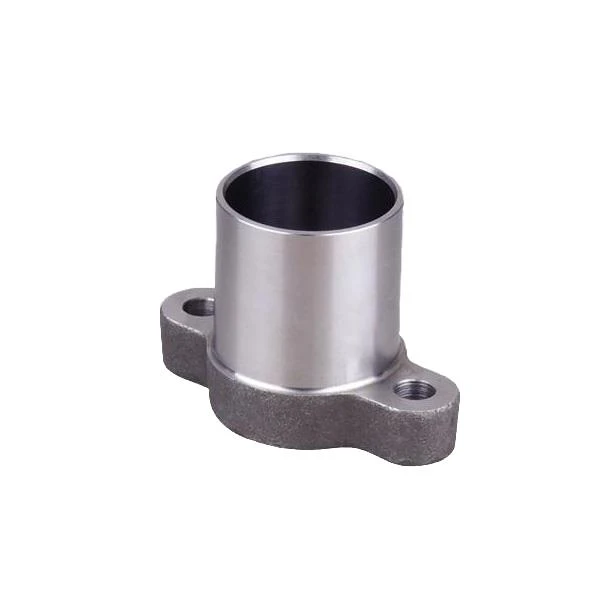die casting automation
Die Casting Automation Transforming Manufacturing Efficiency
In the ever-evolving landscape of manufacturing, die casting automation has emerged as a pivotal advancement, reshaping how industries produce metal parts and components. This innovative process not only streamlines production but also enhances precision, reduces costs, and improves overall product quality. As companies seek to maintain competitiveness in a global market, understanding the implications and advantages of die casting automation is vital.
Understanding Die Casting
Die casting is a metal-forming technique where molten metal is injected into a mold cavity under high pressure. This method is predominantly used for producing complex shapes with tight tolerances, making it a preferred choice for industries such as automotive, aerospace, and consumer electronics. Traditional die casting involves significant manual labor, which can lead to inconsistencies and increased production times. This is where automation plays a crucial role.
The Rise of Automation
Automation in die casting involves the integration of advanced technologies such as robotics, computer numerical control (CNC) machines, and artificial intelligence (AI) into the manufacturing process. These technologies collaborate to enhance efficiency, minimize errors, and increase the overall output of production lines.
One of the most significant advantages of die casting automation is the reduction of human error. Manual processes are often susceptible to inconsistencies due to variations in worker performance and fatigue. Automated systems, on the other hand, maintain consistent operation speeds and precision, ensuring high-quality products with minimal defects. By minimizing human intervention, companies can also reduce labor costs while allocating human resources to more strategic roles, such as quality control and maintenance.
Increased Production Speed and Output
Automated die casting machines are capable of operating continuously, significantly increasing production rates. In traditional setups, the cycle time for each operation can be extended due to the need for manual handling and adjustments. Automated systems, however, can optimize these cycles by synchronizing various processes such as mold preparation, metal injection, cooling, and demolding. As a result, manufacturers can achieve high output levels without compromising quality.
die casting automation

Additionally, automation allows for real-time monitoring of production processes. Data analytics and machine learning algorithms can analyze performance metrics, predict maintenance needs, and identify potential issues before they escalate. This proactive approach minimizes downtime, allowing for smoother operations and higher production efficiency.
Enhancing Design Flexibility
Another advantage of die casting automation lies in its ability to accommodate complex designs. With advanced CNC technology, manufacturers can create intricate molds that would be challenging to achieve through manual means. This flexibility in design not only expands product capabilities but also allows companies to respond quickly to market demands and trends. Customization has become increasingly important in today’s marketplace, and automated die casting processes can easily adapt to the production of various components without extensive re-tooling.
Sustainability and Cost Efficiency
In addition to improving productivity, die casting automation contributes to sustainability efforts in manufacturing. Automated systems typically consume less energy compared to traditional setups due to optimized cycles and reduced waste. Moreover, precise control over material usage minimizes scrap, leading to more sustainable production practices.
The initial investment in automation technology can be significant. However, the long-term benefits often outweigh these costs. Reduced labor expenses, lowered material waste, and enhanced production rates translate to a favorable return on investment (ROI) over time. As industries increasingly prioritize cost efficiency, the adoption of automated die casting processes is expected to rise.
Conclusion
Die casting automation represents a significant leap forward in manufacturing practices. It streamlines production processes, reduces costs, and enhances product quality, enabling companies to remain competitive in a dynamic market. As the technology continues to advance, the potential for further innovation in die casting processes will undoubtedly lead to even greater efficiencies and capabilities. For manufacturers looking to thrive in a fast-paced industrial environment, embracing die casting automation is not just an option—it's a necessity.
-
Pros & Cons of Sand Casting: Products & ApplicationsNewsAug.19,2025
-
Advanced Crawler Drilling Rig for Confined Spaces-Baoding Hairun Machinery And Equipment Trading Co., Ltd.NewsAug.18,2025
-
Crawler Drilling Rig- Baoding Hairun Machinery And Equipment Trading Co., Ltd.|Pneumatic Power,Frame-Supported DesignNewsAug.18,2025
-
Precision OEM Valve Body Castings for Superior PerformanceNewsAug.18,2025
-
Crawler Mounted Drill Rig - Baoding Hairun Machinery | Underground Drilling SolutionsNewsAug.18,2025
-
Crawler Mounted Drill Rig - Baoding Hairun | Pneumatic Safety, Mining EfficiencyNewsAug.17,2025















